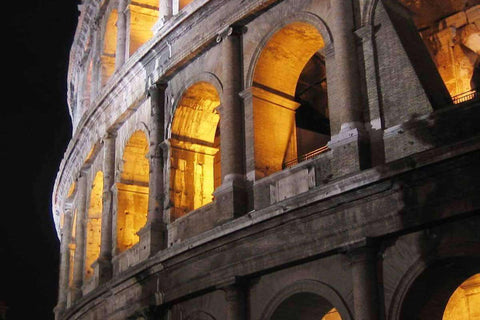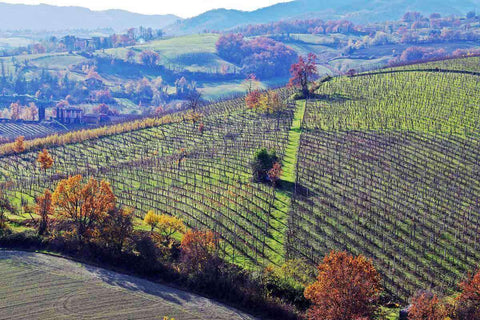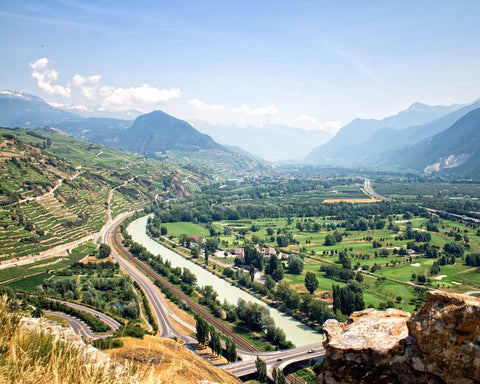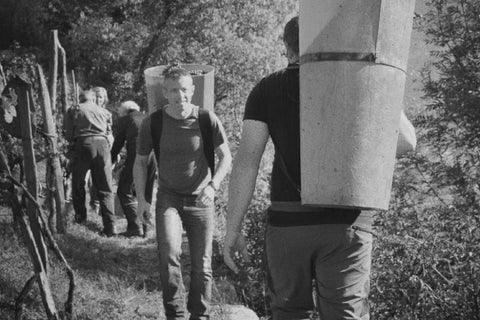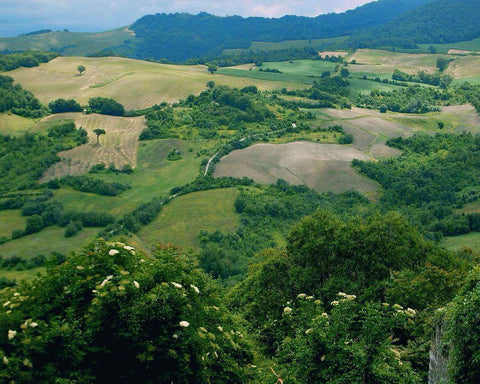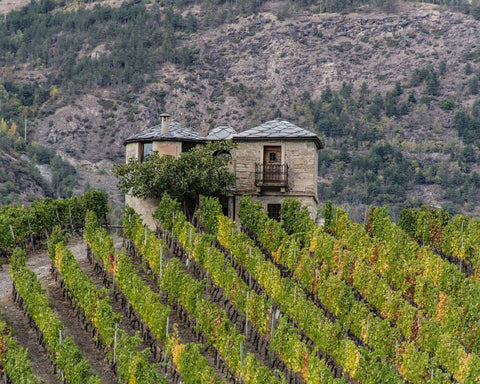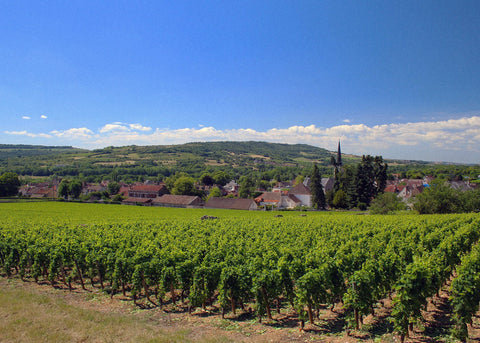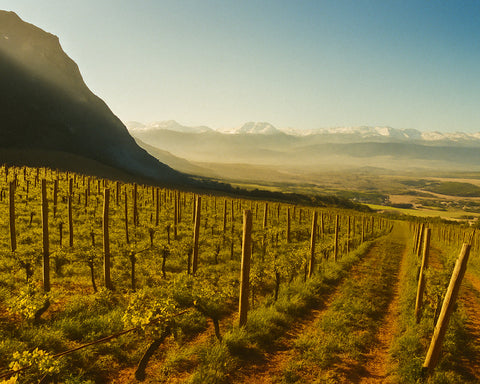Lazio, the heart of Italy and home to its capital, Rome, is a region of immense historical, cultural, and enological significance. Nestled in central Italy, Lazio boasts a diverse landscape that ranges from rolling hills and lush plains to the stunning coastline along the Tyrrhenian Sea. This region is celebrated globally for its rich history, culinary traditions, and burgeoning wine industry.
Over the centuries, Lazio has emerged as a prominent wine-producing region, emphasizing sustainable practices and the revival of ancient grape varieties. The region's wines are not merely beverages; they encapsulate the essence of Lazio's history, its commitment to quality, and its dedication to preserving and enhancing its vinicultural heritage, especially evident in its renowned Frascati and Cesanese wines.
Table of Contents
History of Lazio
Lazio, with its central location, has always been strategically and culturally important. Its history is a mosaic of civilizations, from the Etruscans and Romans to the medieval and Renaissance periods, each leaving a significant mark on the region's viticulture.
Rome, the eternal city, played a pivotal role in the development of viticulture in Lazio. The Romans were adept at winemaking and cultivated extensive vineyards, developing sophisticated techniques that laid the foundation for Lazio's wine production.
Throughout the centuries, Lazio witnessed numerous transformations, from the height of the Roman Empire to the medieval period, where monastic orders preserved and advanced viticultural knowledge. The Renaissance saw a revival of winemaking, with a renewed focus on quality and the introduction of new grape varieties.
In the 19th and 20th centuries, Lazio's wine industry faced challenges and opportunities. The phylloxera epidemic devastated vineyards across Europe, including Lazio, but the region's resilience shone through as winemakers replanted vineyards and adopted modern techniques to improve quality and consistency.
In recent decades, Lazio has experienced a renaissance in winemaking, with a renewed emphasis on indigenous grape varieties and sustainable practices. Creating DOC and DOCG classifications has helped protect and promote the region's wines, solidifying Lazio's place in the global wine industry.
Terroir of Lazio
Lazio's terroir is characterized by its diverse climate, topography, and soil composition. The region enjoys a Mediterranean climate, with hot, dry summers and mild, wet winters, moderated by the influence of the Tyrrhenian Sea.
The landscape varies from volcanic hills and coastal plains to fertile valleys, providing a rich and varied terroir ideal for viticulture. The volcanic soils, particularly around the Alban Hills, are rich in minerals, contributing to the unique flavor profiles of Lazio's wines.
This diverse terroir supports the cultivation of a wide range of grape varieties, each expressing the distinct characteristics of Lazio's multifaceted landscape.
The Geology of Lazio
Lazio's landscape predominantly comprises volcanic hills, coastal plains, and fertile valleys, with elevations ranging from sea level to over 1,000 meters. The region is divided into several sub-regions, each with unique geological characteristics. The primary wine-producing areas include Castelli Romani, Frosinone, and Latina, each contributing distinct terroir profiles.
- Castelli Romani: Known for its volcanic soils, it provides excellent drainage, which is essential for growing high-quality grapes. The region is famed for Frascati, a white wine known for its freshness and minerality.
- Frosinone: Characterized by clayey and calcareous soils, Frosinone is ideal for red grape varieties like Cesanese, producing robust and aromatic wines.
- Latina: This area features sandy and alluvial soils. Latina is well-known for its Moscato di Terracina grapes, producing sweet, aromatic wines.
The region's geological diversity ensures that each grape variety can match its optimal soil type, enhancing the grapes' expression and complexity.
Climate and Its Influence
Lazio's climate is Mediterranean, characterized by hot summers and mild winters, with significant temperature variation between day and night. This diurnal range is crucial for grape ripening, allowing the development of sugars during the day and preserving acidity at night. The region's proximity to the Tyrrhenian Sea also moderates the climate, creating ideal conditions for viticulture.
The Grapes of Lazio
Lazio has several Indigenous grape varieties; each adapted to the region's unique terroir. The most notable are Cesanese, Malvasia, Trebbiano, and Grechetto.
Red Grape Varietals
- Cesanese: The cornerstone of Lazio's most celebrated wines, such as Cesanese del Piglio.
- Sangiovese: Widely planted and known for its high acidity and bright red fruit flavors.
- Montepulciano: Produces robust wines with rich flavors and soft tannins.
- Merlot: Known for its soft and fruity wines.
- Cabernet Sauvignon: Produces wines with deep color, strong tannins, and complex flavors.
White Grape Varietals
- Malvasia: Known for producing aromatic and crisp wines, primarily in Frascati.
- Trebbiano: The grape behind many of Lazio's white wines, known for its acidity and versatility.
- Grechetto: Produces aromatic wines with notes of citrus and herbs.
- Bellone: Known for its high acidity and potential for sparkling wines.
- Moscato di Terracina: Used both in still and sparkling sweet wines.
Top Wines of Lazio
Frascati: Often referred to as the "wine of Rome," Frascati is a testament to Lazio's vinicultural prowess. Made from a blend of Malvasia and Trebbiano grapes, Frascati is characterized by its bright straw color, fresh and fruity aromas, and a crisp, refreshing palate.
The wine undergoes careful vinification to preserve its freshness and delicate flavors, resulting in a wine of elegance and balance.
Cesanese del Piglio: Cesanese del Piglio, while less known internationally, has its distinct identity. Crafted from the Cesanese grape, Cesanese del Piglio wines are known for their deep color, robust structure, and complex aromas of red fruits, spices, and floral notes.
The terroir of Piglio, with its volcanic soils, imparts a certain richness to the wines, with notes of cherry, blackberry, and hints of pepper. Cesanese del Piglio undergoes meticulous aging, producing wines of remarkable depth and longevity.
Other Notable Wines: While Frascati and Cesanese del Piglio are undoubtedly the crown jewels of Lazio, the region is also home to other notable wines like Est! Est!! Est!!! di Montefiascone, a white wine known for its aromatic profile and balanced acidity, and Canaiolo, a red wine with smooth tannins and fruity flavors.
Cuisine and Typical Products of Lazio
Lazio's culinary landscape is as rich and varied as its wines. The region is famed for its robust and flavorful dishes, strongly emphasizing local and seasonal ingredients.
Artichokes, particularly the Romanesco variety, are honored in Lazian cuisine. Dishes like "Carciofi alla Romana," braised artichokes with garlic and mint, capture the essence of Lazio on a plate. Pasta dishes, often featuring guanciale (cured pork cheek), showcase the region's love for hearty, comforting food.
Lazio is also known for its cheeses, with Pecorino Romano being one of the notable varieties. Lazio's culinary traditions, along with its exceptional wines, offer a gastronomic journey that resonates with the region's rich heritage and passion for excellence. Let's dive deep into Lazio's cuisine and typical products
Lazio Antipasti
In Lazio, a meal often starts with a selection of antipasti. These appetizers showcase the region's diverse flavors and set the stage for future courses. A typical antipasti spread might include:
- Supplì: Fried rice balls filled with mozzarella and often seasoned with tomato sauce.
- Carciofi alla Romana: Roman-style artichokes braised with garlic, mint, and parsley.
- Fiori di Zucca Ripieni: Stuffed zucchini flowers, typically filled with mozzarella and anchovies, then fried.
- Puntarelle: A salad made from the shoots of Catalonian chicory, dressed with anchovy, garlic, and vinegar.
Lazio Primi Piatti (First Courses)
The first course in a Lazian meal often features pasta or hearty soups. These dishes showcase the region's grains, vegetables, and cured meats.
- Spaghetti alla Carbonara: A classic Roman pasta dish made with eggs, Pecorino Romano, guanciale, and black pepper.
- Bucatini all'Amatriciana: Pasta with a spicy tomato sauce, guanciale, and Pecorino Romano.
- Pasta alla Gricia: Similar to Carbonara but without eggs, featuring guanciale and Pecorino Romano.
- Minestrone alla Romana: A hearty vegetable soup often enriched with pancetta or bacon.
Lazio Secondi (Second Courses)
Lazio is known for its high-quality meats, particularly lamb and pork. The second course often highlights these prized ingredients.
- Abbacchio alla Scottadito: Grilled lamb chops seasoned with rosemary and garlic.
- Saltimbocca alla Romana: Veal topped with prosciutto and sage, cooked in white wine and butter.
- Coda alla Vaccinara: Oxtail stew cooked with tomatoes, celery, and wine.
- Pollo alla Romana: Chicken cooked with bell peppers, tomatoes, and white wine.
Lazio Contorni (Side Dishes)
Lazian cuisine doesn't neglect vegetables. Many side dishes and salads highlight the region's produce.
- Cicoria Ripassata: Sautéed chicory with garlic, olive oil, and chili flakes.
- Carciofi alla Giudia: Jewish-style fried artichokes.
- Insalata di Puntarelle: A salad made from the shoots of Catalonian chicory, dressed with anchovy, garlic, and vinegar.
Lazio Formaggi (Cheeses)
Lazio produces some of Italy's most renowned cheeses. A cheese course often follows the main dishes.
- Pecorino Romano: A hard, salty cheese made from sheep's milk, used extensively in cooking and on its own.
- Ricotta Romana: A fresh cheese made from sheep's milk whey, known for its creamy texture and mild flavor.
- Caciotta Romana: A semi-soft cheese made from sheep's or cow's milk with a mild and slightly tangy flavor.
Lazio Dolci (Desserts)
Lazian desserts often feature local nuts, honey, and seasonal fruits.
- Maritozzi: Sweet buns filled with whipped cream, often enjoyed at breakfast.
- Crostata di Ricotta: A tart filled with sweetened ricotta cheese and flavored with lemon or orange zest.
- Pangiallo: A traditional Christmas cake made with nuts, honey, and dried fruits.
- Tozzetti: Almond cookies are often enjoyed with dessert wine.
Typical Products of Lazio
Lazio's cuisine is based on high-quality local products. Many of these have achieved protected status, ensuring authenticity and traditional production methods.
Pecorino Romano
The Pecorino Romano, a hard, salty cheese made from sheep's milk, is considered one of the finest cheeses in Italy. This cheese is prized for its sharp flavor and is used in many traditional dishes, including pasta and salads.
Artichokes
Lazio produces a wide variety of artichokes, each reflecting the characteristics of its production area.
- Carciofo Romanesco: Known for its tender, meaty texture, perfect for dishes like Carciofi alla Romana.
- Carciofo di Sezze: A smaller, more delicate variety often used in salads and antipasti.
Meat and Charcuterie
Lazian meat products are known for their quality and distinctive flavors.
- Guanciale: Cured pork cheek, essential for dishes like Carbonara and Amatriciana.
- Porchetta di Ariccia: A savory, fatty, and moist boneless pork roast, often seasoned with garlic, rosemary, and fennel.
Fruits and Vegetables
Lazio's varied climate allows for cultivating a wide range of produce.
- Puntarelle: Shoots of Catalonian chicory, often used in salads.
- Zucchini Romanesco: A variety of zucchini known for its firm texture and sweet flavor.
- Broccoletti: A type of broccoli rabe, often sautéed with garlic and olive oil.
